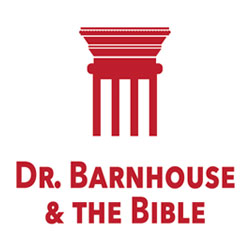
Estifanos of Gwendagwende – Reformer and Martyr
Estifanos of Gwendagwende – Reformer and Martyr
Around the time when John Wyclif and Ian Hus shook the western church by challenging its authority and traditions, a lesser-known monk did something similar in Ethiopia. He was known as Abba Estifanos (in English, Father Stephen).
Estifanos’s Early Life
By the time Estifanos was born in 1380 in the village of Sebuha, northwestern Ethiopia, his father Berhane Meskel had already died in battle. Estifanos was named by his relatives Hadege Anbesa (“likeness of a lion”) and was raised by his uncle to follow in his father’s footsteps as a valiant soldier for their nation.
But Estifanos’s interest was only in learning more about God and how to please him. Against the wishes of his relatives, he joined a religious center called Beta Iyyasus (Church of Jesus), where he was consecrated as a deacon at age eighteen. From there, he moved to the Qoyetsa monastery, in the region of Tigray, where he adopted the name Abba Estifanos.
He remained firm in his decision in spite of several attempts by his uncle and brothers to bring him back to his former life. His mother Sara was particularly distressed by Estifanos’s decision to join a monastery far from home, but he encouraged her to calm her heart. Even though she will not see him again in the flesh, he said, “devote yourself to God so he may make prosper your return.” She then gave him her blessing: “May God who called you be your shepherd.”[1]
At the monastery, Estifanos was employed as a scribe and copier. This gave him the opportunity to read many older manuscripts, besides the Scriptures. He was also called to teach, attracting many listeners. But, like Martin Luther, he continued to be unsatisfied with his own efforts and kept trying to do more pilgrimages, penances, and fasting. In fact, he was too ascetic for many of the other monks, including his superiors who rebuked him several times.
After twelve years at the monastery, at the traditional age of 30, he traveled to the capital, Axum, to be ordained as a priest by the local metropolitan, Abba Bartalomewos, who was impressed by his learning. “My son,” the metropolitan said, “behold, the Holy Spirit is upon you and every word of yours is by the authority of his grace. Now teach everyone thus. Let me write my authorization to you so that they may accept your word.”[2]
But not everyone accepted Estifanos’s teachings, especially when he started to question some recent traditions – such as prostration in front of images of Mary, angels, and saints. In fact, the very cult of Mary was relatively new in Ethiopia. Estifanos considered prostration an act of worship that is only due to the Triune God.
The Stephanites
Eventually, the monks persuaded Abbot Samuel to intervene. For this reason, he had Estifanos imprisoned for three years and expelled one of his most influential followers, Abukerezun. But Abukerezun simply established a new community in a different location, which Estifanos joined after his release. Their followers grew and became known as the Stephanites.
The community had a rough start, since it was not supported by the government, nor by the established church, and the members had to work among locals for food. Their ascetic mindset made these hardships bearable and even suitable to a religious life. It also proved that religious communities could be self-sufficient.
When a community became too big, some of its members opened a new community. Soon, there were three in the region, and Estifanos traveled from one to another daily. Eventually, the number of communities grew to nine, and even some influential men in Ethiopia began to show some interest in their teachings.
The Stephanites were considered heretics for their denouncement of traditions which they considered unbiblical. For example, they denied the presence of the Ark of the Covenant in Ethiopia. According to a long-standing legend, the Ark was brought to Ethiopia by Menelik, the alleged son of the Queen of Sheba and King Solomon. This ark is actually still kept in the Church of Our Lady Mary of Zion in Axum, Ethiopia, where only the guardian of the ark can view it.
Unlike Luther, Estifanos could not count on his rulers’ backing, especially since he refused to bow down in their presence, refused to judge secular trials, opposed the kings’ practice appointing the heads of monasteries, and rejected the kings’ traditional claim of being direct descendants of Solomon. He certainly didn’t make matters any better when he told King Zara Ya’iqob: “The word of the heavenly king cannot be prevented by the earthly king. But an earthly king can be prevented by the word of the heavenly king.”[3]
Estifanos knew that his defiance would eventually lead to martyrdom, but he was prepared because he was convinced he was following the Scriptures. He encouraged his followers to stay faithful after his death.
In fact, Zara Ya’iqob punished Estifanos several times with terrible beatings that left him half-dead. Knowing that Estifanos looked forward to martyrdom, he refrained from killing him. Eventually, he imprisoned Estifanos in a remote region inhabited by Muslims. Estifanos died soon after, probably from his wounds. As for his followers, they were given a choice of denying Estifanos’s teachings or going into exile. They chose the latter.
As soon as they heard of his death, however, they returned and exhumed his body by night, intending to bury him in Tigray. But they were caught on the way, taken to the governor, flogged, imprisoned, and then driven out of the country. Estifanos was then buried again in Gidim.
Two years and four months after Estifanos’s death, Zara Ya’iqob was still angry at the Stephanites, who continued to be as stubborn and defiant as their founder. He then ordered his soldiers to dig up Estifanos’s body and burn it in a place called Tsekara, outside of his territories.
He also continued to persecute the Stephanites, killing many. Estifanos’s first biographer, the Stephanite Abba Gebre Kristos, was martyred after being imprisoned for three years.
A Proto-Protestant?
Some historians have noticed similarities between Estifanos’s message and that of Protestant Reformers. For example, his refusal to abide by traditions with no foundation in Scriptures has caused some to see him as a precursor of sola Scriptura. His refusal to worship Mary and the saints reminds of the Protestant principle of soli Deo gloria. And his rejection of the popular belief that adherence to these traditions was necessary to salvation, combined with his insistence on the saving efficacy of the blood of Christ, shows an understanding of what was later known as sola gratia.
Although his teachings didn’t reach the fullness and precision of the Protestant Reformation, and although his understanding of the Christian life still included a high level of ascetism that most Protestants would deny, his efforts could be compared to those of John Wyclif, Ian Hus, and other forerunners of the Reformation who challenged the church of their day to a Scriptural examination of its theology and practices.[4]
[1] The Ge’ez Acts of Abba Estifanos of Gwendagwende, transl. by Getatchew Aile, Scriptores Aethiopici, Vol. 3, Lovanii in Aedibus Peeters, 2006, 6
[2] Ibid., 18
[3] Ibid., 30
[4] To find out more about Estifanos, see The Faithful Forebearers, 2.3 Ethiopia – Estifanos https://faithfulforebearers.com/2-3-ethiopia-estifanos/

























